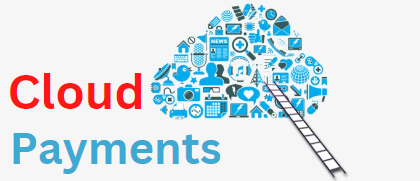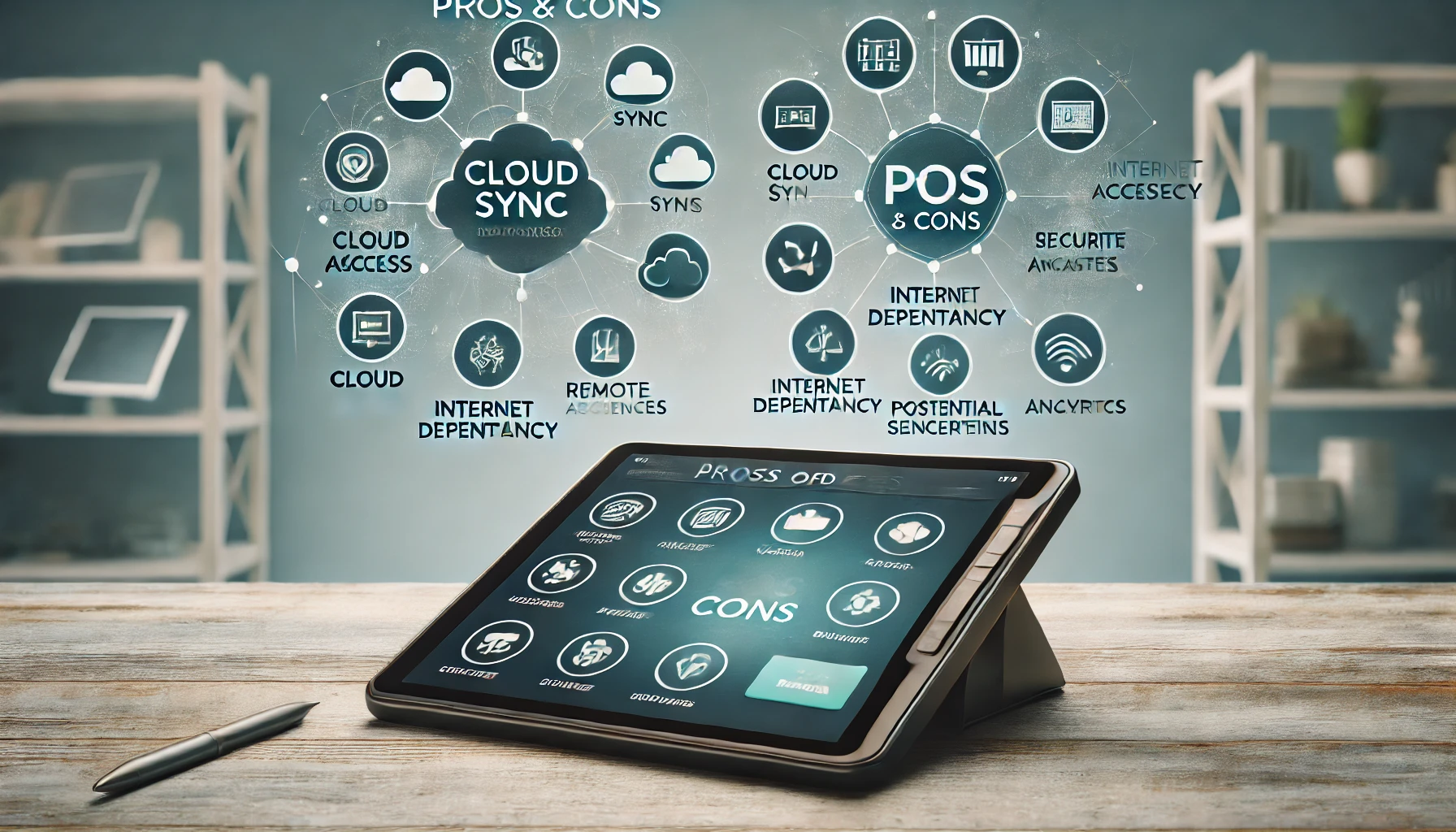Cloud Payment Systems vs. Traditional Payment Systems
In today’s digital age, the way we make payments has evolved significantly. Traditional payment systems, such as cash and checks, have been the norm for centuries. However, with the advent of technology, cloud payment systems have emerged as a convenient and efficient alternative.
In this article, we will delve into the advantages and disadvantages of cloud payment systems compared to traditional payment systems, exploring various aspects such as security features, integration and compatibility, cost analysis, user experience, scalability, and flexibility.
Advantages of Cloud Payment Systems over Traditional Payment Systems
- Accessibility and Convenience: One of the primary advantages of cloud payment systems is their accessibility and convenience. With cloud payment systems, users can make payments anytime, anywhere, as long as they have an internet connection. This eliminates the need for physical presence or carrying cash, making transactions more convenient for both consumers and businesses.
- Speed and Efficiency: Cloud payment systems offer faster and more efficient payment processing compared to traditional methods. With just a few clicks, payments can be made instantly, reducing the time and effort required for manual processing. This speed and efficiency are particularly beneficial for businesses that deal with a high volume of transactions.
- Enhanced Security: Cloud payment systems often come with robust security features that protect sensitive financial information. Encryption technology and tokenization ensure that payment data is securely transmitted and stored, reducing the risk of fraud or data breaches. Additionally, cloud payment systems often offer multi-factor authentication, adding an extra layer of security to the payment process.
- Integration and Compatibility: Cloud payment systems are designed to seamlessly integrate with various platforms and devices. This compatibility allows businesses to accept payments through multiple channels, such as websites, mobile apps, and point-of-sale systems. By offering a wide range of integration options, cloud payment systems enable businesses to provide a smooth and consistent payment experience to their customers.
- Cost Savings: Cloud payment systems can be more cost-effective compared to traditional payment systems. With cloud-based solutions, businesses can eliminate the need for expensive hardware and software installations. Additionally, cloud payment systems often offer flexible pricing models, allowing businesses to pay only for the services they use. This scalability helps businesses save costs, especially for small and medium-sized enterprises.
- Enhanced Analytics and Reporting: Cloud payment systems provide businesses with valuable insights through advanced analytics and reporting features. These systems can generate detailed reports on sales, customer behavior, and transaction trends, helping businesses make data-driven decisions. By leveraging these analytics, businesses can optimize their operations, improve customer satisfaction, and drive growth.
- Global Reach: Cloud payment systems enable businesses to expand their reach beyond geographical boundaries. With the ability to accept payments in multiple currencies and languages, businesses can cater to a global customer base. This global reach opens up new opportunities for businesses to tap into international markets and increase their revenue streams.
- Seamless Customer Experience: Cloud payment systems offer a seamless and user-friendly experience for customers. With features such as one-click payments, saved payment information, and personalized checkout experiences, customers can make payments quickly and easily. This streamlined process enhances customer satisfaction and encourages repeat business.
- Scalability and Flexibility: Cloud payment systems are highly scalable and flexible, allowing businesses to adapt to changing needs and demands. Whether a business experiences sudden growth or seasonal fluctuations, cloud payment systems can easily accommodate increased transaction volumes without disruptions. This scalability ensures that businesses can scale their operations without worrying about payment processing limitations.
- Innovation and Future-Proofing: Cloud payment systems are at the forefront of technological advancements in the payment industry. By adopting cloud-based solutions, businesses can stay ahead of the curve and leverage emerging technologies such as mobile payments, contactless payments, and biometric authentication. This innovation not only enhances the customer experience but also future-proofs businesses against evolving payment trends.
Disadvantages of Cloud Payment Systems compared to Traditional Payment Systems
- Internet Dependency: One of the main disadvantages of cloud payment systems is their reliance on internet connectivity. In areas with poor or unstable internet connections, users may face difficulties in making payments. This dependency on the internet can be a significant drawback, especially in remote or underdeveloped regions where internet access is limited.
- Potential Downtime: Cloud payment systems are susceptible to downtime or service interruptions. If the cloud service provider experiences technical issues or undergoes maintenance, it can disrupt payment processing for businesses and inconvenience customers. This potential downtime highlights the importance of choosing a reliable and reputable cloud payment system provider.
- Data Privacy Concerns: While cloud payment systems offer enhanced security features, some users may still have concerns about data privacy. Storing sensitive financial information in the cloud raises questions about the safety and confidentiality of personal data. To address these concerns, businesses must ensure that their chosen cloud payment system provider adheres to strict data protection regulations and industry best practices.
- Initial Setup and Integration: Implementing a cloud payment system may require initial setup and integration efforts. Businesses need to integrate the system with their existing infrastructure, such as point-of-sale systems or e-commerce platforms. This integration process can be time-consuming and may require technical expertise. However, once the initial setup is complete, the benefits of a cloud payment system outweigh the initial challenges.
- Potential Vendor Lock-In: Businesses that opt for a specific cloud payment system provider may face the risk of vendor lock-in. This means that switching to a different provider or migrating to an in-house payment system can be challenging and costly. To mitigate this risk, businesses should carefully evaluate the scalability and flexibility of the chosen cloud payment system and consider the long-term implications of vendor lock-in.
Security Features: Cloud Payment Systems vs. Traditional Payment Systems
Security is a critical aspect of any payment system, and both cloud payment systems and traditional payment systems have their own security features and considerations.
- Cloud Payment Systems: Cloud payment systems offer several security features to protect sensitive financial information. One of the key security measures is encryption technology, which ensures that payment data is securely transmitted and stored. Encryption converts the data into an unreadable format, making it difficult for unauthorized individuals to access or decipher the information.
Additionally, cloud payment systems often employ tokenization, a process that replaces sensitive payment data with unique tokens. These tokens are used for transaction processing, while the actual payment data is securely stored in the cloud. Tokenization adds an extra layer of security by ensuring that even if the token is intercepted, it cannot be used to retrieve the original payment information.
Cloud payment systems also commonly incorporate multi-factor authentication (MFA) to verify the identity of users. MFA requires users to provide multiple forms of identification, such as a password, a fingerprint, or a one-time verification code. This additional layer of authentication significantly reduces the risk of unauthorized access to payment accounts.
Furthermore, cloud payment systems often undergo regular security audits and certifications to ensure compliance with industry standards and regulations. These audits assess the system’s security controls, vulnerability management, and data protection practices, providing businesses and customers with assurance regarding the system’s security.
- Traditional Payment Systems: Traditional payment systems, such as cash and checks, rely on physical means of transaction and do not involve digital data storage or transmission. While this may seem inherently secure, traditional payment systems have their own vulnerabilities.
Cash transactions, for example, are susceptible to theft and loss. Carrying large amounts of cash increases the risk of robbery, and once cash is lost or stolen, it is challenging to recover. Additionally, counterfeit currency can be a concern, as it can be difficult to detect counterfeit bills without specialized equipment.
Checks, on the other hand, can be subject to fraud and forgery. Criminals can alter the payee’s name, the amount, or even create counterfeit checks. This can lead to financial losses for both individuals and businesses.
Integration and Compatibility: Cloud Payment Systems vs. Traditional Payment Systems
Integration and compatibility are crucial factors to consider when choosing a payment system, as businesses need to ensure that the system seamlessly integrates with their existing infrastructure.
- Cloud Payment Systems: Cloud payment systems are designed to integrate with various platforms and devices, providing businesses with flexibility and compatibility. These systems often offer application programming interfaces (APIs) that allow businesses to connect their payment system with their e-commerce platforms, point-of-sale systems, or mobile applications.
By integrating with e-commerce platforms, businesses can offer a smooth and consistent payment experience to their online customers. Customers can make payments directly on the website, without being redirected to a third-party payment gateway. This seamless integration enhances the user experience and reduces the risk of cart abandonment.
Cloud payment systems also support integration with point-of-sale (POS) systems, enabling businesses to accept payments in physical stores. By connecting the payment system with the POS system, businesses can streamline the checkout process, automatically update inventory, and generate real-time sales reports.
Furthermore, cloud payment systems often provide software development kits (SDKs) or plugins for popular e-commerce platforms and mobile applications. These SDKs and plugins simplify the integration process, allowing businesses to quickly and easily incorporate the payment system into their existing infrastructure.
- Traditional Payment Systems: Traditional payment systems, such as cash and checks, do not require integration with digital platforms or devices. Cash transactions involve physical exchange, while checks are manually processed by banks. However, businesses that accept traditional payment methods may still need to integrate their accounting systems or cash registers to track and record transactions accurately.
Cost Analysis: Cloud Payment Systems vs. Traditional Payment Systems
Cost is a significant consideration for businesses when choosing a payment system. Let’s compare the cost aspects of cloud payment systems and traditional payment systems.
- Cloud Payment Systems: Cloud payment systems offer several cost advantages compared to traditional payment systems. Firstly, cloud payment systems eliminate the need for expensive hardware and software installations. Businesses do not have to invest in physical payment terminals or servers, reducing upfront costs.
Additionally, cloud payment systems often offer flexible pricing models, allowing businesses to pay only for the services they use. This pay-as-you-go model is particularly beneficial for small and medium-sized enterprises (SMEs) that may have fluctuating transaction volumes. SMEs can scale their payment processing capabilities as their business grows, without incurring unnecessary costs during periods of low transaction volumes.
Furthermore, cloud payment systems typically have lower transaction fees compared to traditional payment methods. Credit card processing fees, for example, are often lower for online transactions made through a cloud payment system compared to physical point-of-sale terminals. This cost advantage can result in significant savings for businesses, especially those with a high volume of transactions.
- Traditional Payment Systems: Traditional payment systems may involve various costs that businesses need to consider. Cash transactions, while seemingly cost-free, can incur expenses related to cash handling, such as cash counting machines, safes, and security measures. Additionally, businesses may need to invest in insurance to protect against theft or loss of cash.
Checks also come with costs, such as check printing, postage, and bank fees. Businesses may need to purchase check stock, ink, and printers, as well as pay for postage when mailing checks. Furthermore, banks often charge fees for processing checks, which can add up, especially for businesses that receive a large number of checks.
User Experience: Cloud Payment Systems vs. Traditional Payment Systems
User experience plays a crucial role in the adoption and success of a payment system. Let’s compare the user experience of cloud payment systems and traditional payment systems.
- Cloud Payment Systems: Cloud payment systems offer a seamless and user-friendly experience for both businesses and customers. These systems often provide features such as one-click payments, saved payment information, and personalized checkout experiences.
One-click payments allow customers to make purchases with a single click, without having to re-enter their payment information for each transaction. This convenience reduces friction in the checkout process, resulting in faster and smoother transactions. By eliminating the need to manually enter payment details, one-click payments also reduce the risk of errors or typos.
Saved payment information is another feature offered by cloud payment systems. Customers can securely store their payment details, such as credit card information or bank account numbers, within the payment system. This eliminates the need to repeatedly enter payment information, making subsequent transactions quicker and more convenient.
Personalized checkout experiences are also possible with cloud payment systems. Businesses can customize the payment interface to match their branding and provide a consistent user experience. This branding consistency enhances trust and recognition, contributing to a positive overall user experience.
- Traditional Payment Systems: Traditional payment systems, such as cash and checks, offer a straightforward but less streamlined user experience compared to cloud payment systems. Cash transactions involve physically counting and exchanging money, which can be time-consuming, especially for large transactions. Additionally, cash transactions require customers to carry the appropriate amount of cash, which can be inconvenient and potentially unsafe.
Checks, while widely accepted, require customers to manually fill out the necessary information, such as the payee’s name, the amount, and the date. This manual process can be prone to errors or omissions, leading to delays or complications in payment processing.
Scalability and Flexibility: Cloud Payment Systems vs. Traditional Payment Systems
Scalability and flexibility are essential considerations for businesses, as they need payment systems that can adapt to their changing needs and demands.
- Cloud Payment Systems: Cloud payment systems are highly scalable and flexible, allowing businesses to accommodate increased transaction volumes without disruptions. These systems can handle a high volume of transactions simultaneously, ensuring that businesses can process payments efficiently, even during peak periods.
Furthermore, cloud payment systems can easily scale up or down based on business requirements. Whether a business experiences sudden growth or seasonal fluctuations, cloud payment systems can adjust their processing capabilities accordingly. This scalability eliminates the need for businesses to invest in additional hardware or infrastructure to handle increased transaction volumes temporarily.
Cloud payment systems also offer flexibility in terms of payment methods and currencies. These systems can accept various payment methods, such as credit cards, debit cards, digital wallets, and bank transfers. Additionally, cloud payment systems often support multiple currencies, allowing businesses to cater to a global customer base.
- Traditional Payment Systems: Traditional payment systems, such as cash and checks, have limited scalability and flexibility compared to cloud payment systems. Cash transactions, for example, can become challenging to manage when a business experiences significant growth or an increase in transaction volumes. Handling large amounts of cash can be time-consuming and may require additional resources, such as cashiers or cash counting machines.
Similarly, checks may not be suitable for businesses that require immediate payment processing or have a high volume of transactions. Processing checks manually can be time-consuming and may result in delays in receiving funds. Additionally, checks are typically limited to the currency of the issuing country, which can be a limitation for businesses operating internationally.
Frequently Asked Questions (FAQs) about Cloud Payment Systems and Traditional Payment Systems
Q.1: What is a cloud payment system?
A cloud payment system is a digital payment solution that allows users to make payments using internet-enabled devices, such as smartphones or tablets. It eliminates the need for physical payment terminals and offers convenience, speed, and enhanced security.
Q.2: How does a cloud payment system work?
A cloud payment system works by securely transmitting payment information from the user’s device to the cloud-based server. The server processes the payment and sends a confirmation back to the user’s device. The transaction details are then stored in the cloud for future reference and reporting.
Q.3: What are the advantages of cloud payment systems over traditional payment systems?
Cloud payment systems offer advantages such as convenience, speed, enhanced security, accessibility to multiple payment options, real-time reporting and analytics, integration with other business systems, scalability, cost savings, enhanced customer experience, and environmental sustainability.
Q.4: What are the disadvantages of cloud payment systems compared to traditional payment systems?
Some disadvantages of cloud payment systems include internet dependency, security concerns, potential downtime, limited acceptance, and regulatory compliance requirements.
Q.5: Are cloud payment systems more secure than traditional payment systems?
Cloud payment systems offer advanced security features, such as encryption and tokenization, to protect sensitive payment information. However, both cloud payment systems and traditional payment systems have their own security concerns, and businesses must implement appropriate security measures to protect customer data.
Conclusion
In conclusion, cloud payment systems offer numerous advantages over traditional payment systems. They provide convenience, speed, enhanced security, accessibility to multiple payment options, real-time reporting and analytics, integration with other business systems, scalability, cost savings, enhanced customer experience, and environmental sustainability. However, there are also some disadvantages to consider, such as internet dependency, security concerns, potential downtime, limited acceptance, and regulatory compliance requirements.
Businesses must carefully evaluate their specific requirements and consider factors such as security, integration, scalability, cost, and user experience when choosing between cloud payment systems and traditional payment systems. By understanding the differences and weighing the pros and cons, businesses can make informed decisions that align with their goals and objectives. Ultimately, the choice between cloud payment systems and traditional payment systems will depend on the unique needs and circumstances of each business.











